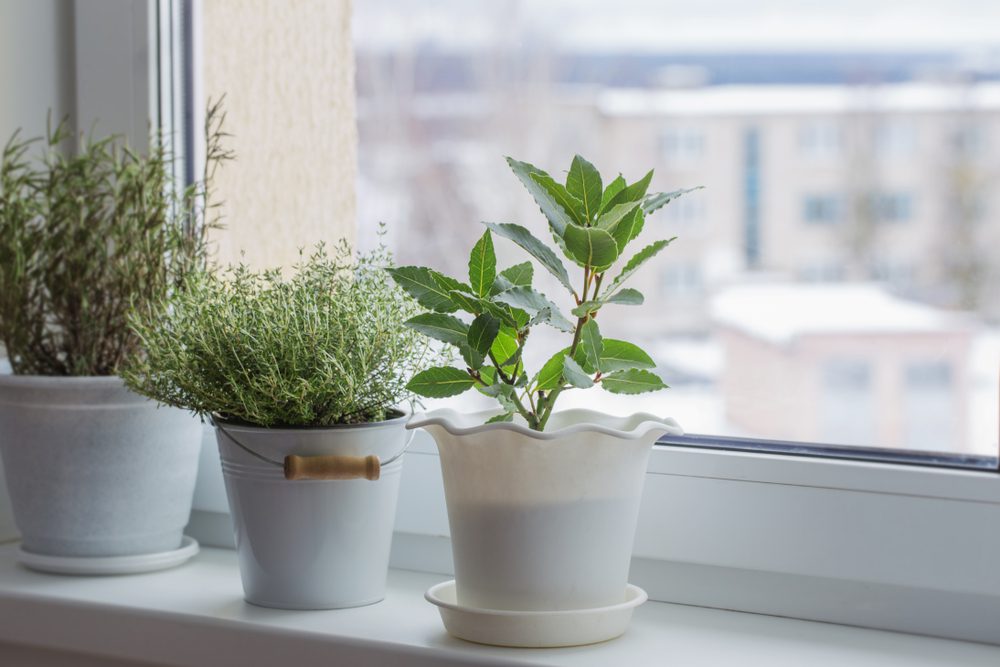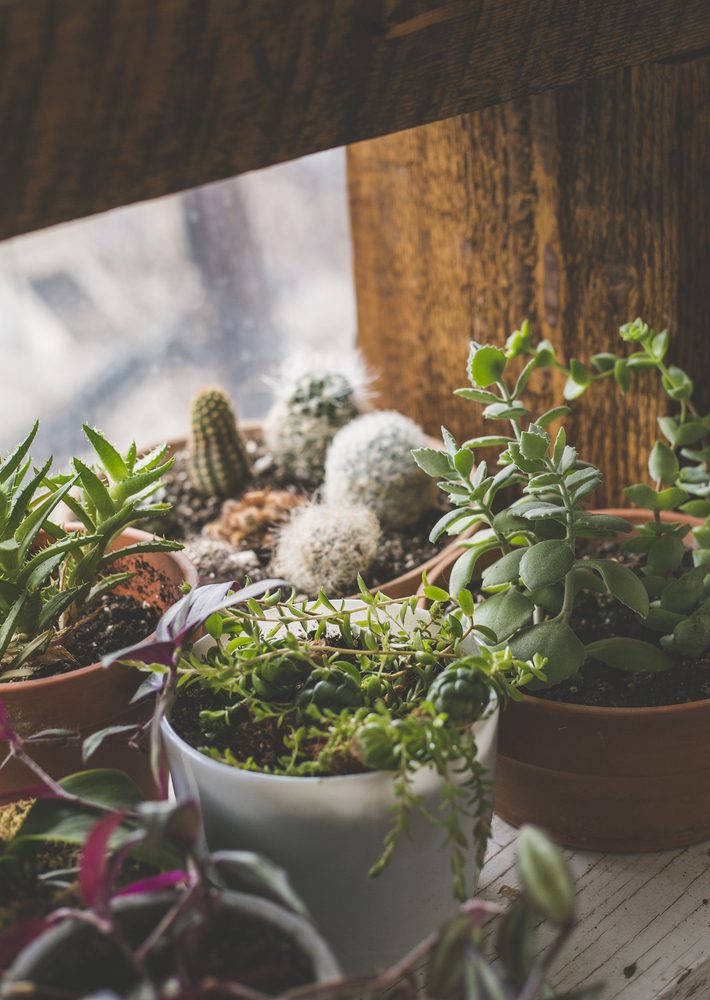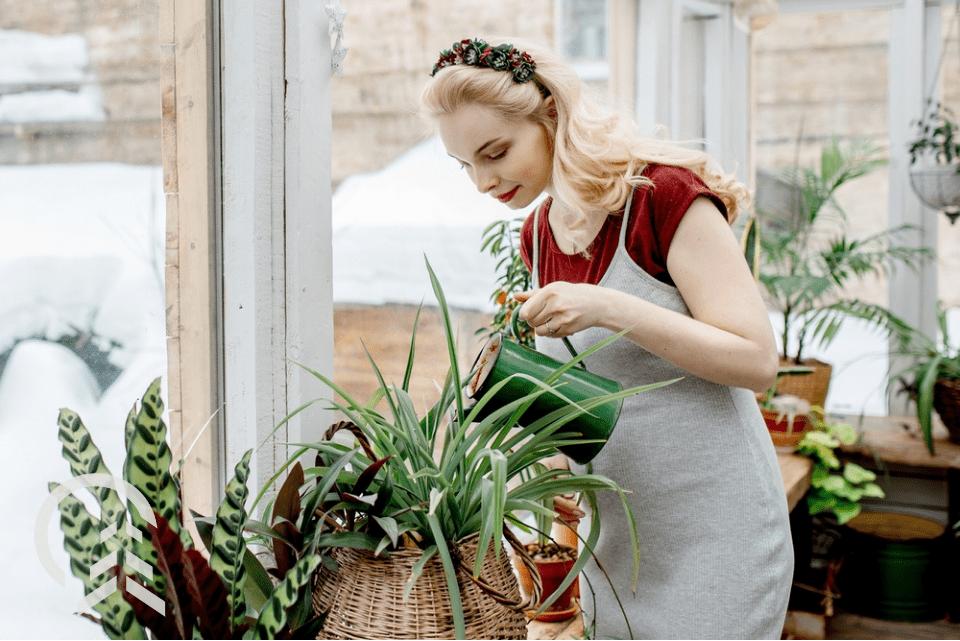As the temperature drops and the days grow shorter, the thought of gardening might seem like a distant summer memory. However, indoor winter gardening offers a wonderful opportunity to keep your green thumb active year-round. From a collection of houseplants to a garden in a greenhouse, an indoor garden can bring life and vibrancy to your home. No matter what form your indoor garden takes, having such a garden can lift the spirits while you’re waiting for the beautiful spring weather to return.
Taking care of plants indoors can be very rewarding. In this article, we’ll discuss indoor plant care tips that can help your indoor winter garden thrive.
Can You Garden Inside During Winter in Chicago?
Gardening inside in winter in Chicago is possible! There are many things you can do to grow plants inside.
- Move plants indoors for the season. Move plants that aren’t hardy enough to survive in Zone 5, such as tropical plants like potted hibiscus, orchids, and ferns, as well as any other delicate or non-hardy varieties. To ensure they receive adequate light during the shorter days of fall and winter, consider using grow lights to supplement natural sunlight.
- Start seed shopping for the spring. Many garden centers and nurseries begin receiving seed packets in early January, making it a great time to visit and explore new options for your spring garden. Plan what you want to grow, but remember not to start your seeds too early. Begin planting seeds just a few weeks before the last frost to avoid long, leggy plants that may struggle to thrive in your garden.
- Focus on your houseplants. Houseplants need love and care throughout the year. Fall and winter is an excellent time to re-pot houseplants that have outgrown their current home. Additionally, remember to clean your houseplants by gently wiping their leaves to remove dust, which helps them absorb more light and stay healthy.
How To Grow an Indoor Garden

Below are the steps to growing an indoor garden. Since indoor gardens can take many forms, you’ll have to pick and choose the steps that make the most sense for you.
Choose appropriate pots and potting soil. When repotting your indoor plants, choose pots and potting soil appropriate for the plant being grown.
Select a location. Choose a location where your plants will enjoy a comfortable temperature and adequate lighting.
Adjust watering practices indoors. If you’ve just brought your outdoor plants indoors, adjust their watering schedule. Soil that dries quickly in the summer sun dries more slowly inside.
Set up grow lights. During the fall and winter months, it may be difficult to find an area in your home that receives an adequate amount of light for certain plants to thrive. Use grow lights to give your plants the light they need to be healthy and strong.
Best Winter Indoor Plants
Choosing the right plants for your indoor garden during the winter months can make a significant difference in how successful and enjoyable your gardening experience will be. The best winter indoor plants are those that can thrive in lower light conditions and cooler temperatures, providing beauty and greenery even when it’s frosty outside.
Herbs: Fresh herbs are a fantastic addition to any indoor garden, offering both culinary benefits and a delightful fragrance. Basil, thyme, rosemary, mint, and parsley are all excellent choices for indoor growing. These herbs require moderate light and regular watering, making them relatively easy to maintain on a sunny windowsill or under grow lights.
Leafy Greens: Certain leafy greens are well-suited for indoor gardening, providing fresh, healthy options for your winter meals. Lettuce, spinach, and arugula can grow well indoors with adequate light. These greens are quick to mature and can be harvested continually by picking the outer leaves as needed.
Flowering Plants: Adding flowering plants to your indoor garden can brighten up your home during the darker months. African violets, begonias, and peace lilies are popular choices for their vibrant blooms and ability to thrive in indoor conditions. These plants require indirect light and regular watering, but they are generally low-maintenance and rewarding.
more slowly inside.
Succulents and Cacti: For those looking for low-maintenance options, succulents and cacti are ideal. These plants require minimal watering and can tolerate lower light levels, making them perfect for indoor environments. Varieties like jade plants, aloe vera, and echeveria can add unique textures and colors to your indoor garden.
Orchids: Known for their exotic and long-lasting blooms, orchids are a beautiful addition to any indoor garden. Phalaenopsis orchids, in particular, are well-suited for indoor growing, requiring indirect light and moderate humidity. With the right care, orchids can bloom multiple times a year, bringing a touch of elegance to your home.
Pothos and Philodendrons: These trailing plants are perfect for adding greenery to shelves or hanging baskets. Pothos and philodendrons are known for their ability to thrive in low light and their forgiving nature when it comes to watering. Their lush, cascading vines can create a tropical feel indoors, even in the depths of winter.
Air-purifying plants: Snake plants, spider plants, ZZ plants, and rubber plants are all great options for improving indoor air quality while being easy to grow. Many of these varieties are incredibly resilient and can thrive in low light and with infrequent watering.
By selecting the best winter indoor plants for your home, you can create a vibrant and thriving indoor garden that brings joy and fresh air into your living space all season long.

Need Beautiful Plants for Your Indoor Winter Garden? Stop By Platt Hill Nursery
Platt Hill Nursery sells beautiful plants to customers in the Chicagoland area. With locations in Carpentersville and Bloomingdale, we’re conveniently located, and we understand local growing issues like Chicago area weather patterns. We know what types of plants are best for local gardens, and we’re always happy to provide growing advice to customers. Stop in our shops today!


